
04 Feb Is content rocket science? You bet it is!
It’s so very easy to get distracted.
The magazine media industry is awash in conferences, white papers, and study groups on native advertising, big data, mobile platforms, social media, responsive design, digital replicas, programmatic advertising, alternative revenue sources, events… Everything but content.
It’s a rare day when there is a conference about content or more than a few content sessions at a magazine media conference. We keep getting distracted by the shiny new things. And yet, content is our raison d’être.
Fortunately, we employ some really, really smart editors and reporters, and there are some really, really smart media start-ups out there, and they are all constantly pushing the boundaries of content creation into new frontiers. And they made 2015 a great year for exciting, innovative content.
Those brightest editorial minds brought us, among other things:
- A robust rejuvenation of audio storytelling
- Multi-media packages that pick up where The New York Times’ “Snowfall” left off
- Stories told with sensors and satellites
- Graphic journalism projects that are attracting younger readers
- A leap forward in crowd-sourcing and eyewitness media
- The spectacular success of the habit-forming “briefing” format
- An explosion of apps designed to enrich writers’ multi-media storytelling toolboxes
- The creation of sophisticated editorial games
If those increasingly imaginative, compelling content examples are any indication, the future for magazine media content is bright indeed. Except for one nagging problem. Very few magazine media editors and writers can actually do any of those things.
-You can’t create 21st century content in a 20th century corporate culture-
All of those projects came out of editorial operations where management has committed to a transition from a print-centric, legacy operation to a 21st century, multi-media, mobile-first team of multi-talented journalists and developers whose job descriptions ensure they can write, photograph, video, blog, tweet, podcast, analyse data, and even do some coding. Those organisations also have staff who do content and audience development.
That does not describe the editorial staffs of most magazine media organisations today. Publishers are “stupid” about publishing because they are tied to a legacy model, Guardian executive editor for digital Aron Pilhofer says in “The Art and Science of Data-Driven Journalism” report from the Tow Centre for Digital Journalism.
“Our jobs, like it or not, will fundamentally change,” Pilhofer said. “These are not typical [editorial] positions and that’s the way we need to all start moving. We need to start thinking who we need to bring in, what skills do we need… how we start thinking about collaboration, because frankly our competitors are doing that.
“BuzzFeed has people who do all these [multimedia and data] things, the Guardian does not,” he said. “The culture of journalism is going to change.”
The future of magazine media content, and the industry itself, depends on it.
-How does a new culture drive content?-
In the 21st century, a journalist must be a flexible, multi-talented digital native who is constantly learning new skills and willing to try anything to create content in whichever form meets the increasingly sophisticated needs of readers for content at different times of the day on different platforms.
“We don’t adhere to the preset roles you have in news organisations,” Quartz senior editor Zach Seward told Digiday. “It prevents a myopic view of how stories need to be told. When you have the ability to think about how to tell a story differently, then it leads to more creative ways.”
For example, one of the Quartz editorial teams is called the “Things” team whose members both write and visualise stories. Its members are called reporters, but editor Kevin Delaney told Digiday he prefers to call them “polymaths” because they all have a combination of journalism, coding, and data -visualisation skills, many of which they taught themselves.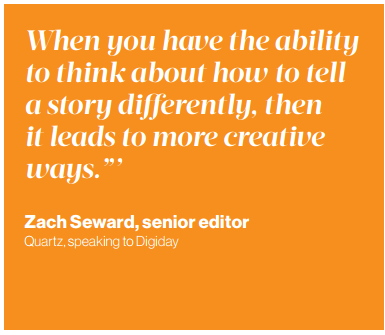
The rest of the Quartz editorial team doesn’t have the same coding skills, but they are expected to find and edit their own photos, write captions, do data journalism, and create their own charts and graphs using the Quartz-built tool called “Chartbuilder”. The integration of skill sets and roles extends to the architecture of the editorial department where developers and reporters actually sit next to one another, collaborating on projects.
If you’re going to create content that will resonate with today’s readers, your journalists must have new job descriptions that outline the new expectations that will create and reward multi-skilled content creators.
-How to get to the promised land of content-
Publishers and editors cannot wave a wand and turn their editorial departments into sophisticated, digital-savvy, multi-media content engines overnight. It starts with the commitment from the top to change, followed by thorough, rigorous, ongoing training.Once the corporate commitment is made and the required skills enumerated, the key to success lies in the training room (and in the acquisition of the requisite equipment, apps and software).
The Financial Times (FT) is one of the most forward-thinking publications in the world, but even they had to create a training programme to get there (and they’re still at it). The FT developed a 10-step process to engage journalists in changing how content is created and distributed. [Former] FT head of operations, Lisa MacLeod, shared her process with attendees at the International Newsroom Summit in Amsterdam in late 2014:
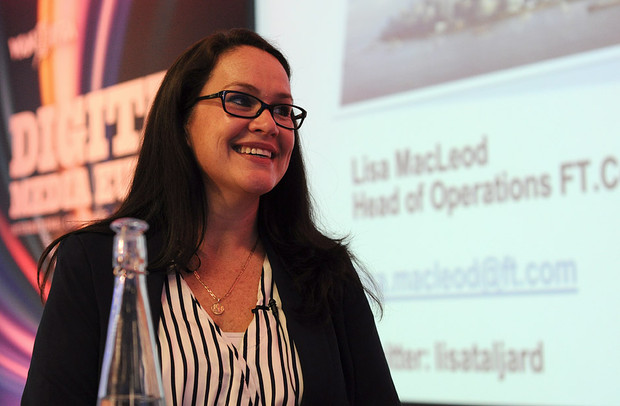
Lisa McLeod, Former Head of Operations for ft.com, presenting at WAN-IFRA’s International Newsroom Summit in 2014.
1. Shaping the modern journalist
The FT recognised that its journalists deserved to know precisely what will be expected of them (“twenty digital competencies”) and how to execute on those expectations. Through surveys (and low attendance at lunch-time training sessions), MacLeod discovered that staffers preferred full-day sessions to get them up to speed.
2. Training 101
MacLeod and her training team presumed nothing. And they were right. For example:“We talk a lot about data journalism,” she told attendees. “But it turns out lots of people have never worked in a spreadsheet in their lives.” So MacLeod and her team created a series of workshops to teach everything from how to work with a spreadsheet and basic web production to tagging, hyperlinks, and digital media law.
3. Decoding code
A minimum understanding of HTML was determined to be one of the twenty essential competencies for FT staffers. Apparently, the staffers agreed. MacLeod’s sessions on coding always attract standing-room-only crowds, she reported.


4. Newsroom analytics
If the FT was going to hold its staff to achieving twenty competencies, there had to be a way to measure their performance that the journalists themselves had access to and understood. The FT built its own in-house analytics system to quantify the performance of every story. MacLeod told the Summit audience that it is essential that the editors and journalists understand when and how readers are interacting with their content. More importantly, they need to know how to interpret the data to be able to improve that particular piece of content and subsequent content packages.
5. Tools of the trade
MacLeod and her team are constantly making staff aware of physical and software tools that enable the journalists to practice and enhance their new multimedia crafts.
6. Connecting business partners
At the “new” FT, the various departments work together to educate one another in new and better ways to generate content and advertising to benefit the readers. For example, the tech department holds “tech-splainer” seminars to explain various technical platforms and programs and how they can help with content creation. “What’s an API, for example?” MacLeod said. “What does that mean for content? Who can that reach?”
7. Creative collaboration
Rather than sitting back and waiting for content ideas to present themselves, various departments of the FT work together to develop new ideas. “We have held some ‘creative summits’ — almost like a hack-a-thon, but with content at the centre [yielding] more ideas than we could implement in 100 years,” said MacLeod.
8. Building, testing, failing fast
Today’s journalist must transition from being a “Lone Ranger” operating independently to being more like a member of a start-up team. McLeod said the FT is constantly building new content models and projects, testing them, failing fast, learning, and pivoting. Today’s journalist must not only be comfortable with this kind of flexibility and fluidity but also embrace it.
9. Communicating and educating
MacLeod spreads the responsibility for continuing education and communication among the staff, inviting them to post ideas and external innovations on the in-house blog, to which everyone has access and where they can post any time.
10. Reward the willing
Nothing talks like money, and that’s what MacLeod banks on to draw attention to the monthly “digital champion” who receives a cash prize (“enough for dinner with a few friends”). The prize and attendant publicity act to encourage innovative thinking and acting.

-A culture of creative content-
With the right culture, expectations and training in place, the creative genie is out of the bottle. Where creative risk-taking is encouraged and rewarded, content takes on all sorts of new forms. Here then is a run-down of some of the categories of the best innovative content genres of 2014:
A podcast renaissance
It wasn’t so long ago that podcasting was written off, a weak cousin to an old and failing medium (radio). But a funny thing happened on the way to the trash heap: Podcasting came back, with gusto. In just six months in the middle of 2014, podcast consumption leapt 18 per cent in the US, according to Edison Research, which also found Americans consume 21.1 million hours of podcasts a day.
Indeed, monthly podcast consumption is up almost 90 per cent over 2008 to 17 per cent of the US population or 46 million people, according to an early 2015 Edison Research report. Edison also found that almost 60 per cent of those listeners took in three or more podcasts each week.
Subscriptions to podcasts on iTunes reached 1 billion in 2013 and Apple anticipated finishing 2014 with seven billion podcast downloads, according to Apple. And podcast services company RawVoice, which tracks 20,000 podcasts, has seen a tripling of monthly unique podcast listeners to those shows from 25 million in 2009 to 75 million in 2014. “It’s sort of a renaissance — podcasts are in vogue,” RawVoice CEO Todd Cochrane told the Post. Media were taking notice with the Washington Post publishing a story in September 2014 entitled “Podcasts are back — and making money” and New York magazine publishing “What’s behind the podcast renaissance?” in October.
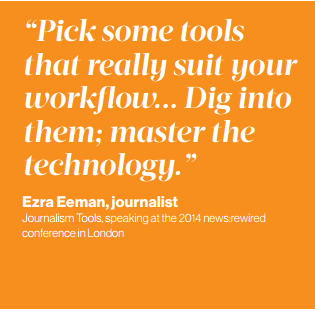
What had been a clunky multi-step process of downloading podcasts in the early 2000s is now almost instant. And with super-fast wifi and the explosive growth in smartphones and Bluetooth-enabled cars, it’s easier than ever to listen to podcasts.
The poster child for the podcast renaissance is a show out of US National Public Radio called “Serial” that, in its first season, revisited a 15-year-old murder case with interviews, fact-digging, and a questioning of the convicted ex-boyfriend’s guilt. Now in its second season, Serial has adapted their method of reopening seemingly “old news” stories for deep investigative purposes. Now the podcast’s spotlight shines on US soldier and former Taliban prisoner, Bowe Bergdahl, and the scandal surrounding his capture in 2009, and his release over five years later.
The show was so popular in its first season that it skyrocketed to five million downloads or streams in less than nine weeks, the fastest show in iTunes history to hit that number. The first episode of Serial’s sophomore season garnered an impressive 3.4 million downloads in its first week alone. Currently, at this time of this article’s publication, the second season has been streamed over five million times on Pandora, according to an article posted in The New York Times in January of 2016.
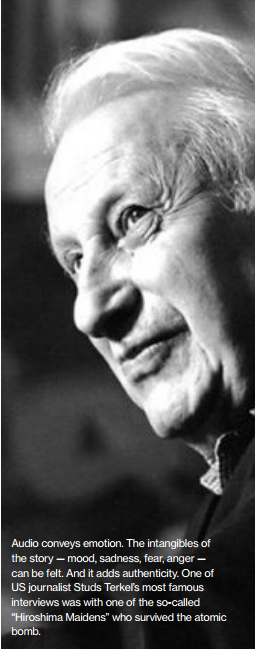 For perspective, the next ten podcasts after Serial attract an average of 620,000 listeners per episode, according to CNN Money, still an impressive number but one that serves to accentuate the mind-boggling success of Serial. With growing audience numbers like that, podcasts clearly not only make popular content, they also make good ad vehicles. Where brands had been hesitant to advertise on podcasts due to minimal reach, that is clearly changing with mega-hits like Serial.
For perspective, the next ten podcasts after Serial attract an average of 620,000 listeners per episode, according to CNN Money, still an impressive number but one that serves to accentuate the mind-boggling success of Serial. With growing audience numbers like that, podcasts clearly not only make popular content, they also make good ad vehicles. Where brands had been hesitant to advertise on podcasts due to minimal reach, that is clearly changing with mega-hits like Serial.
Some research reports indicate that podcast listeners are more engaged than a television audience and less likely to skip ads, especially when they are delivered by the show’s host in a seamless transition from telling a story to delivering an ad in the same style. “That makes them content, and people aren’t skipping content,” Edison vice president, Tom Webster, told CNN Money.
As a result, the ad rates are attractive for publishers. An ad spot costs about US$25 per 1,000 downloads or streams, according to Podtrac. For a hit like Serial, which has had over 19 million downloads or streams, this would amount to roughly US$500,000, CNN Money reported.
“We’re making a bet that there is a massive market opportunity here,” 2014 podcast hit “Start-Up” founder Matt Lieber told Fast Company. In just three weeks, Start-Up, which documents the launch of a podcast network, burst on the podcast scene becoming one of the top five podcasts on the iTunes charts.
From sound to simplicity: The daily briefing format
Another 2014 trend in content innovation was the explosion of daily briefs. Following the success of Quartz, a 2013 start-up from Atlantic Media, media companies in 2014 launched collections of tight content packaged in a daily briefing format and delivered to their readers (and potential subscribers) in an email and online.
In October 2014 alone, The Financial Times, Vox, and Time Inc all launched daily e-newsletters and The New York Times made its e-newsletter free. A month later, The Economist launched its first-ever daily edition, calling it “an espresso shot of global analysis” and delivering it either on an Android or Apple app or via email.
In each case, the mission was to provide a concise, valuable service quickly — a content-creation task which requires exquisite judgement and poet-like writing skills. “The weekly [edition] works as much for what we leave out as what we leave in,” John Micklethwait, FT editor-in-chief told The Guardian. “It is the same principle with Economist Espresso.” The Espresso aims to be a must-read every morning, requiring no more than five minutes to digest the need-to-know stories of the day, news that broke overnight, and a market update, Micklethwait told The Guardian. The Espresso costs US$3.99 a month or is free with a digital subscription to The Economist.
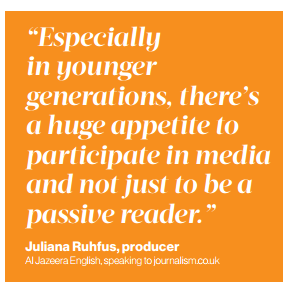
Over at Quartz, there’s the same brevity, but with an added twist: personality. “We wanted the newsletter to feel like a personal email from a savvy, intelligent, well-connected person giving you a take on the important things going on in the world,” Quartz senior editor Gideon Lichfeld told Digiday.
All but one (Vox’s ) are delivered in the morning. All but one (Time Inc’s Daily Brief) link to both their own and outside stories. All sell advertising. The two companies that report subscribers have tens of thousands (Quartz: 95,000; Time Inc’s The Brief: 650,000) with industry-beating open rates (Quartz and Time report 41 and 40 per cent open rates). Writing tight for the briefs and for mobile in general is an absolute must, and is an essential skill content creators at magazine media companies must learn.
From simple to stunning: Stories based on satellite images
It probably wouldn’t occur to most writers to take advantage of satellite imagery in their stories, but enough journalists did exactly that in 2014 to make the practice one of the hottest new content approaches of the year.
When Josh Sterns, the director of Journalism and Sustainability at the Geraldine R. Dodge Foundation, asked the followers of his media blog to name the most stunning examples of online journalism in 2014, he got a unanimous response: “Losing Ground”. Losing Ground was a collaboration between the public interest journalism group ProPublica and The Lens (a non-profit media organisation in New Orleans). The story used satellite imagery and other sensors to shine a shocking light on the rapid disappearance of land along the Louisiana coastline.
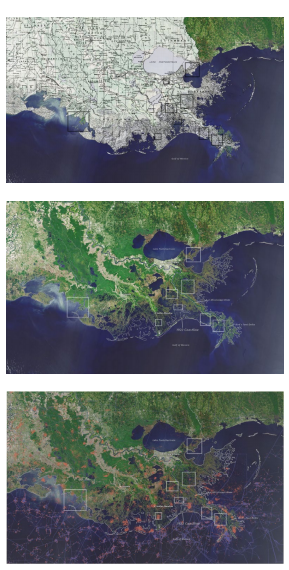
But that wasn’t the only satellite image enhanced journalism in 2014. For its story “A Rogue State Along Two Rivers,” The New York Times used a satellite image of the Tigris and Euphrates rivers to trace the growth of ISIS (Islamic State of Iraq and Syria). Readers scrolled down the river in a visually rich journey through one of the biggest stories of the year.
The German weekly Zeit created a stunning series of maps as part of a long piece about Germany after reunification (“A Nation Divided”). The Texas Tribune traced another river — The Rio Grande — using GPS data loggers, maps and photos to demonstrate the human and ecological impact of the river slowly drying up on its journey south. And National Public Radio in the US used satellite images to document the demolition of entire neighbourhoods as part of Chicago urban renewal (“Demolished”).
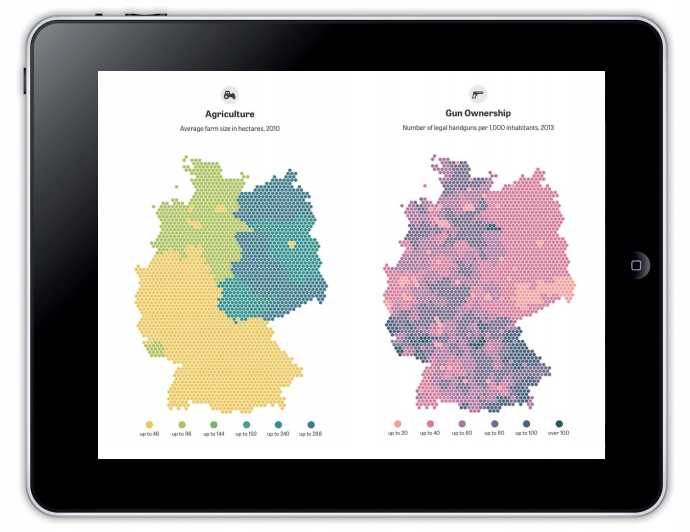
Not a trend yet: the graphic novel approach
If reaching a younger demographic is a goal (never mind appealing to older readers who enjoy the genre), then using the graphic novel approach to storytelling is definitely a good way to go. Partnering with blog-publishing site Medium, the US-based Centre for Investigative Reporting created an amazing series on teen solitary confinement as a graphic novel and then animated the novel to create an even more powerful video. Also in 2014, Aljazeera America created a graphic novel about online privacy, security and big data called “Terms of Service”. To encourage similar visually rich storytelling, the company released the tool they created in order for others to be able to use it to create their own graphic novels.
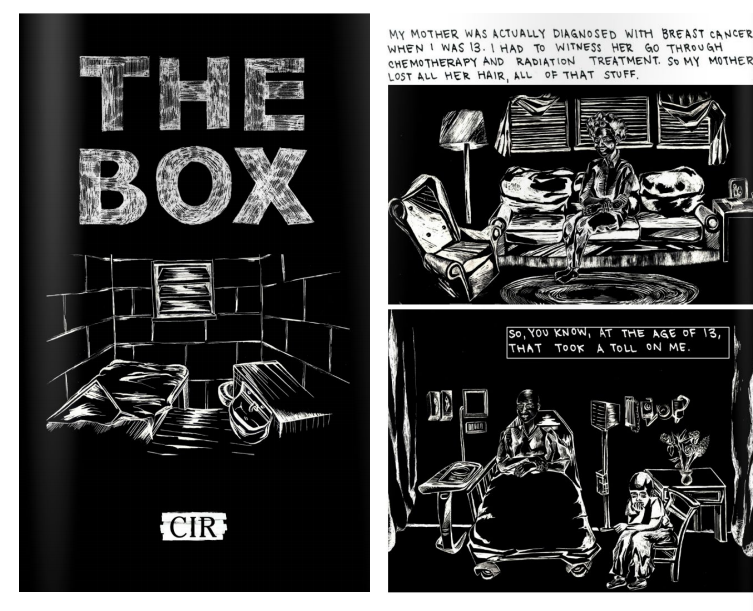
Interactive story telling
The paradigm-changing production of “Snowfall” in 2012 by The New York Times spawned an avalanche of interactive story forms that have advanced the form beyond even the sophistication of Snowfall. A good example is the set of interactive pieces created by Al Jazeera English (AJE). “You can go into a story through interactive; you can navigate through it yourself and therefore engage with that story, go deeper and get a bit more involved in that story,” AJE managing director Al Anstey told journalism. co.uk.” In a typical AJE interactive piece, readers can zoom in on maps and watch videos from a location or listen to audio or tap on a text symbol to read more or get statistics. Sometimes a video runs in the background providing context to the text or slide show. “We need to be ahead of the game ideally, but certainly up with the game of technology in order to know what we as journalists can do to best leverage it,” Anstey said.

-What’s next? Adaptive content-
What does the future of content look like?
“More, bigger, faster is going to change to less, customised, and as needed,” Newseum senior vice president Paul Sparrow, a former Emmy Award-winning broadcast journalist and executive producer, wrote for the American Journalism Review. “Social sharing will become the main driver of content. To be successful, the next generation of news/media companies must deliver critical or entertaining information customised for a specific person based on their location, job, relationship status, interests, contacts and eventually, even their mood.
“It would contain all of the elements of traditional [content], but would use big data analytics, social media semantic analysis, location tracking software and IoT (Internet of Things) sensor data streams, so the content would be filtered and timed to meet the individual’s needs,” Sparrow wrote. “[Media] organisations must transform themselves. Their competition is not other news media, but Google, Facebook and Apple. Journalists must also give up their medium-centric identity. Print, television, radio and the web will soon become irrelevant distinctions.

“[Media organisations] must take each story and produce ‘adaptive content,’ meaning the story appears in the best possible format based on the user’s situation — short, text-based headlines for smart watches, and high-quality 4K video for large screens at home. Audio-only for mobile devices and cars, and high-quality print versions for longer reads and evergreen content. Like responsive web design, it has to be totally focused on the user experience, not the identity of the content producer,” Sparrow concluded.
Now it’s all about just doing it
Based on all the examples above of fascinating and innovative content, magazine media appear poised to continue producing the kind of compelling material that will attract readers for some time to come.
And, regardless of exactly how the future of magazine media content plays out, we are certainly no longer in that recent and seemingly hopeless place when it looked like readers were moving away from magazines. Quality content will win the day, according to global trends research conducted by Martin Nettling for Ramsay Media in South Africa.
“It’s all very well to have thousands of bloggers writing about cars, but when you are trying to make a buying decision, would you rather believe them or the editor of Car magazine and his team of experts?” Ramsay Media outgoing chairman, Alan Ramsay told BizCommunity.com.
“After the initial heady appeal of online citizen journalism, readers appear to be returning to trusted sources for premium content that cuts through the overwhelming digital noise — and advertisers will pay to access those quality-engaged audiences,” Ramsay said.
So, today we have readers returning to consume our print and digital trusted brand content, plus an embarrassment of riches in terms of the tools to create that content and the variety of platforms on which to deliver it.
Now all we have to do is execute.


